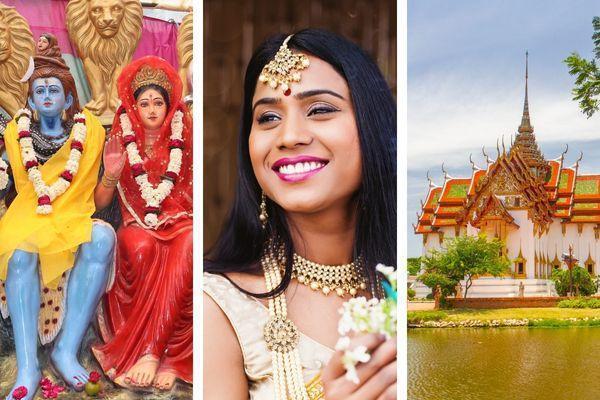
The ‘Mahashivratri’ day is an auspicious festival dedicated to Lord Shiva, the main deity of the Hindus is worshiped worldwide by Hindus and Spiritualists as well. Unlike most other Indian festivals, this one is quiet and spent observing fast, rituals, chanting hymns, and praying for spiritual upliftment.
In India, Mahashivratri day is a public holiday, so most people visit the nearest Shiva temple with their families to participate in the night-long prayers and rituals. The ones abroad do the same either at Hindu temples that organize such prayers or by themselves.
Amongst those living abroad also, it is not uncommon to host small private gatherings of friends and relatives to remain awake all night and pray. This is also a time when India receives an influx of tourists, mostly devout Hindus and spiritual followers who prefer to visit Indian temples during this time.
This includes staunch followers of Hinduism, yoga practitioners, and those who seek spiritual upliftment. So, who is Lord Shiva and how is he connected to yoga? Let’s try to figure that out.
Summary
- Who is Lord Shiva?
- When is Mahashivratri Day Celebrated?
- The Significance of Maha Shivratri Day
- Temples to Visit on Maha Shivratri
- How to transfer money to India
Who is Lord Shiva?
Lord Shiva means everything in the universe and beyond, but going back to the oldest text which is the Rig Veda, the word ‘Shiva’ is used as an adjective for liberation and final emancipation. The ancient Hindus believe in the concept of trinity, but consider Lord Shiva above the other two Gods — Lord Brahma who is the creator of the universe, and Lord Vishnu, the protector.
This is because of the legendary tale which highlights that Lord Shiva was always there and is everything that is existential and non-existential. Hinduism believes that the earth and the universe are less than 5% of what exists and when seen in totality, it’s Shiva. Everything is in him. It is believed that he is the ultimate soul within which every existential being would eventually merge.
The night of Maha Shivratri is celebrated fasting to remind the self that food and other material objects do not run the body, but the Lord does, and he is in absolute control of one’s existence. Lord Shiva is also known as the infinite and the ‘Adiyogi’ who transmitted the knowledge of yoga through the 7 wise sages, or Sapta Rishis. So, there is a great deal of significance attached to this day, when yoga practitioners spend time meditating and praying to merge with the lord. All over the world, many spiritual leaders organize gatherings with discourses and meditation camps during this day.
When is Mahashivratri Day Celebrated?
The word ‘Maha Shivratri’ literally means the important night and the term ‘Maha’ distinguishes it from the other ‘Shivratri’ that occurs on the 13th night of every lunar cycle and are dedicated to Lord Shiva. Staunch followers fast during this period throughout the year, while there are those who do it only during the Maha Shivratri because the day has a special significance attached to it.
Unlike the West, the Hindus celebrate festivals based on lunar calendars. This brings a slight difference in the names of the months, which happens because of the lunar pattern followed. While the day remains the same, South India celebrates it on the 13th night of the Magha month, while North celebrates it on the 13th night of the Phalgun month.
The difference is because of the lunar pattern followed — the Southern calendar ends the month with the new moon, while the Northern with the full moon. However, the date remains the same and in 2023, it occurs on the 18th day of February. For those living abroad, there are online Hindu calendars to which they can add their current location and preferred lunar calendar type. It gives them the exact date and auspicious time to observe the fast and rituals.
The Significance of Maha Shivratri Day
There are many legendary tales about this auspicious day because the Lord takes many forms and events occur during different eras. However, the most popular one is that of ‘Samudra Manthan’ or the event of churning of the ocean to procure ‘Amrit’ or the divine nectar. The churning required tremendous strength and the two opposing clans — Gods and Demons — had to do it together.
While churning, there came out a deadly poison called ‘Halahal’ that had to be contained, or else it could destroy the entire universe. This deadly poison was consumed and contained by Lord Shiva to save the universe, while everybody was still trying to get the divine nectar. As it was the 13th day of Magha, this day is celebrated as Maha Shivratri.
Temples to Visit on Maha Shivratri
Lord Shiva is worshiped across all the Shiva temples, but if you are specifically visiting India for this event, the 12 Jyotir Linga temples have special significance. The Shiva Lingas are symbols of the lord and domes that emerged on their own. These are the genesis of the dome-shaped nuclear reactors and those who understand their scientific significance, make it a point to visit these holy temples. However, each has its own schedule for the special event, but with the official temple websites available, tourists can check them and talk to the authorities beforehand.
How to transfer money to India
Maha Shivratri is an auspicious time to do something good and whether it is to visit India, participate in online or offline discourses, or simply make a quiet donation, we understand your money exchange needs. Small World’s international money transfer to India makes all of that a seamless process with competitive exchange rates and quick processing. For further details, get in touch with our team and get started within minutes. Remember that your first online transaction is fee free!